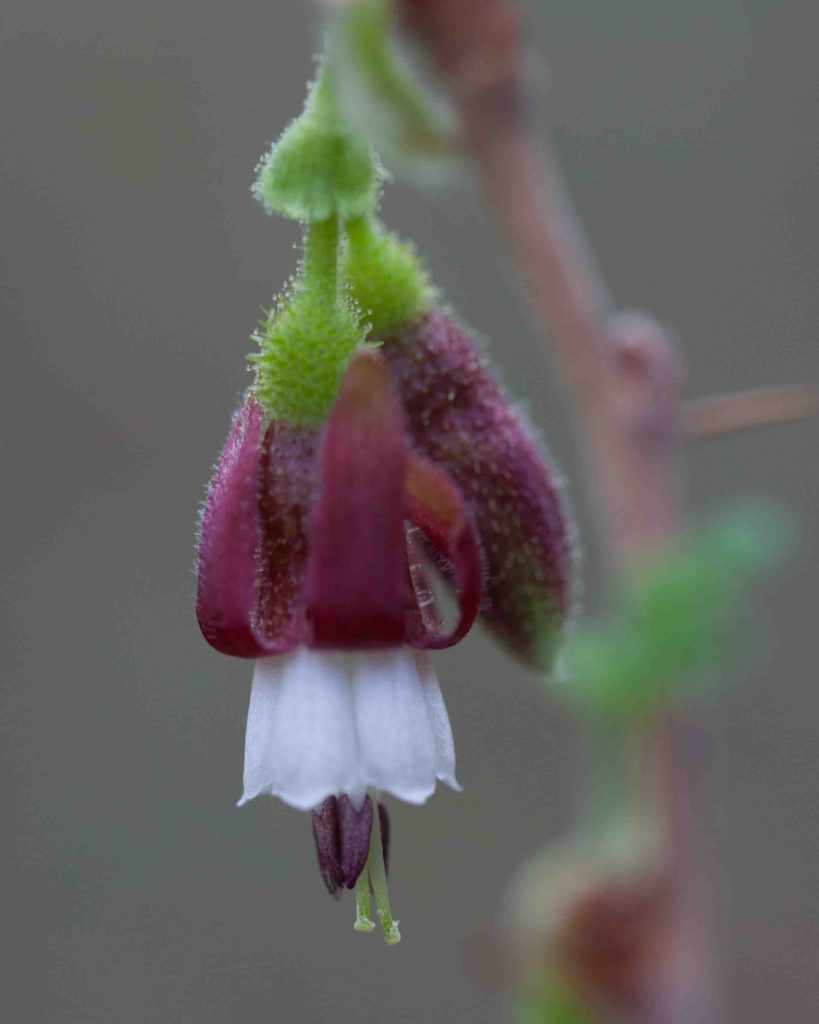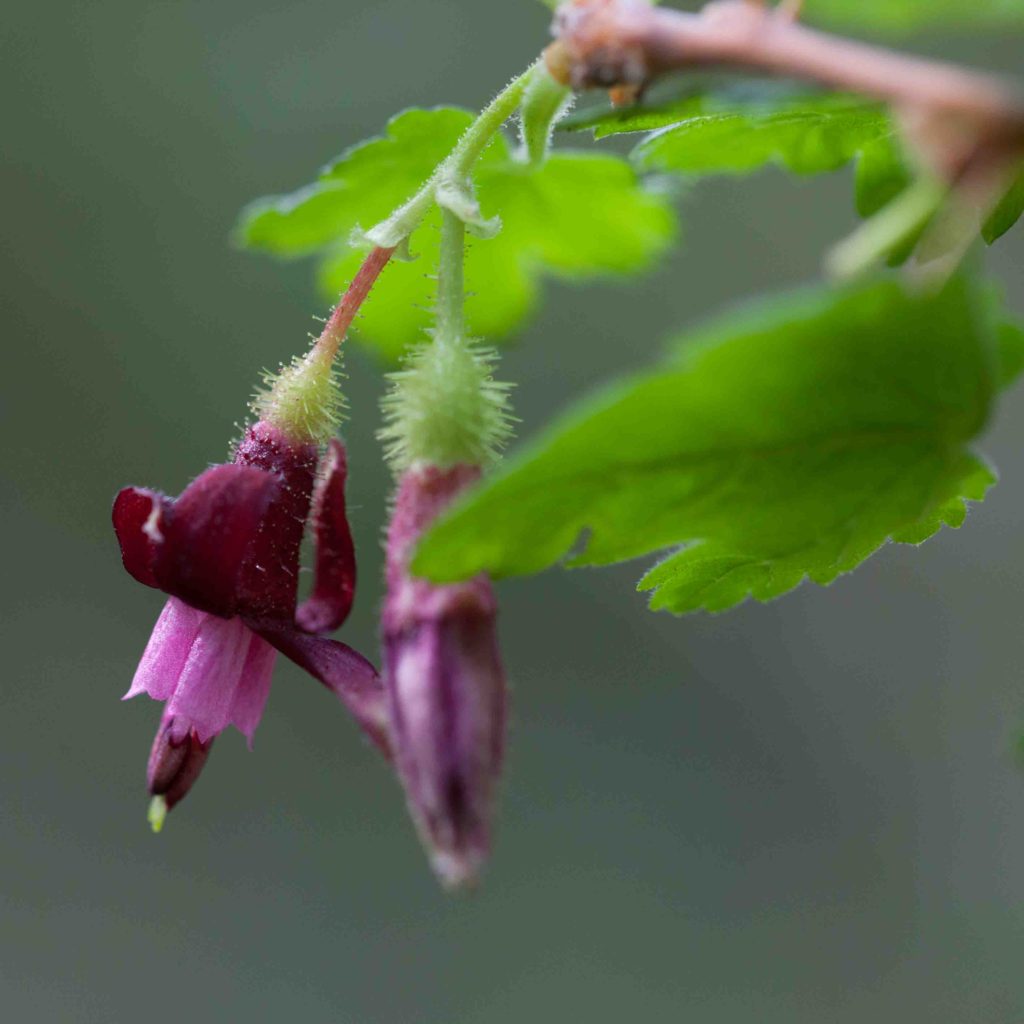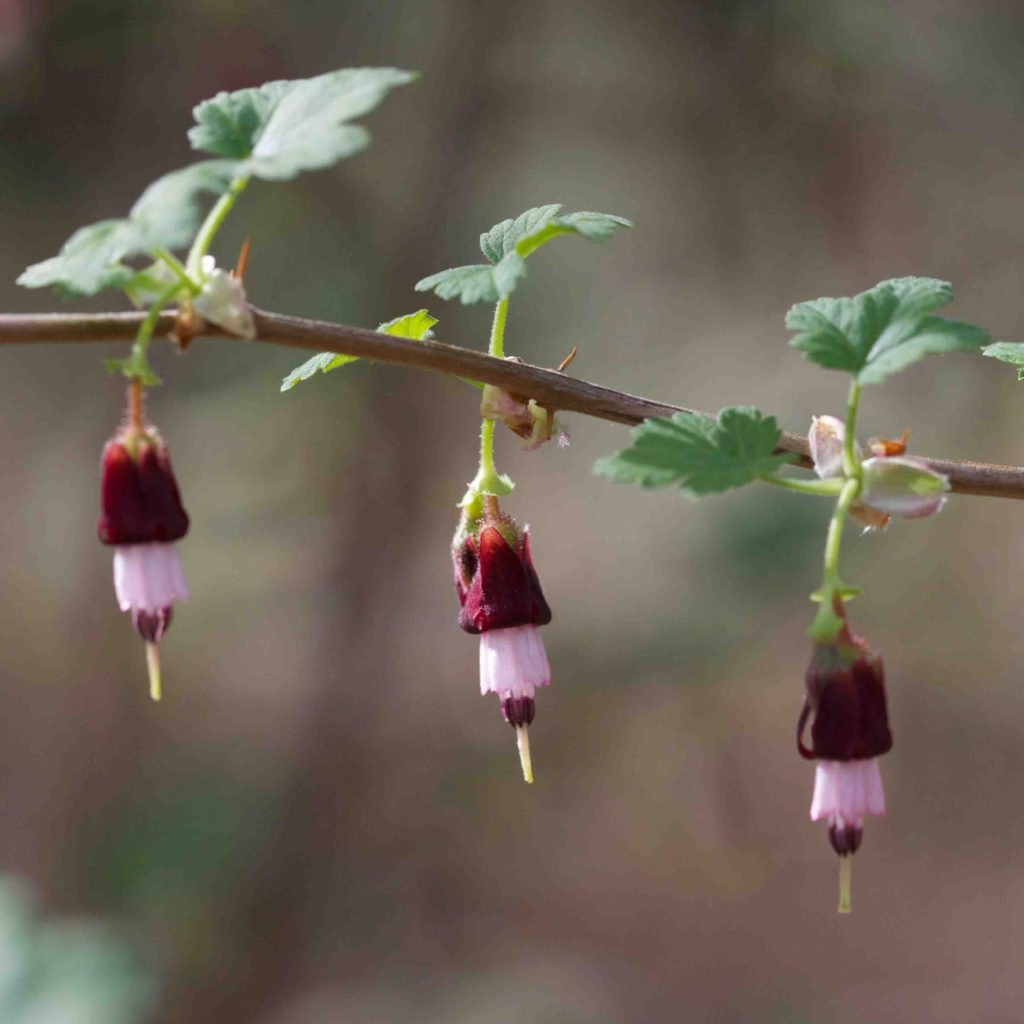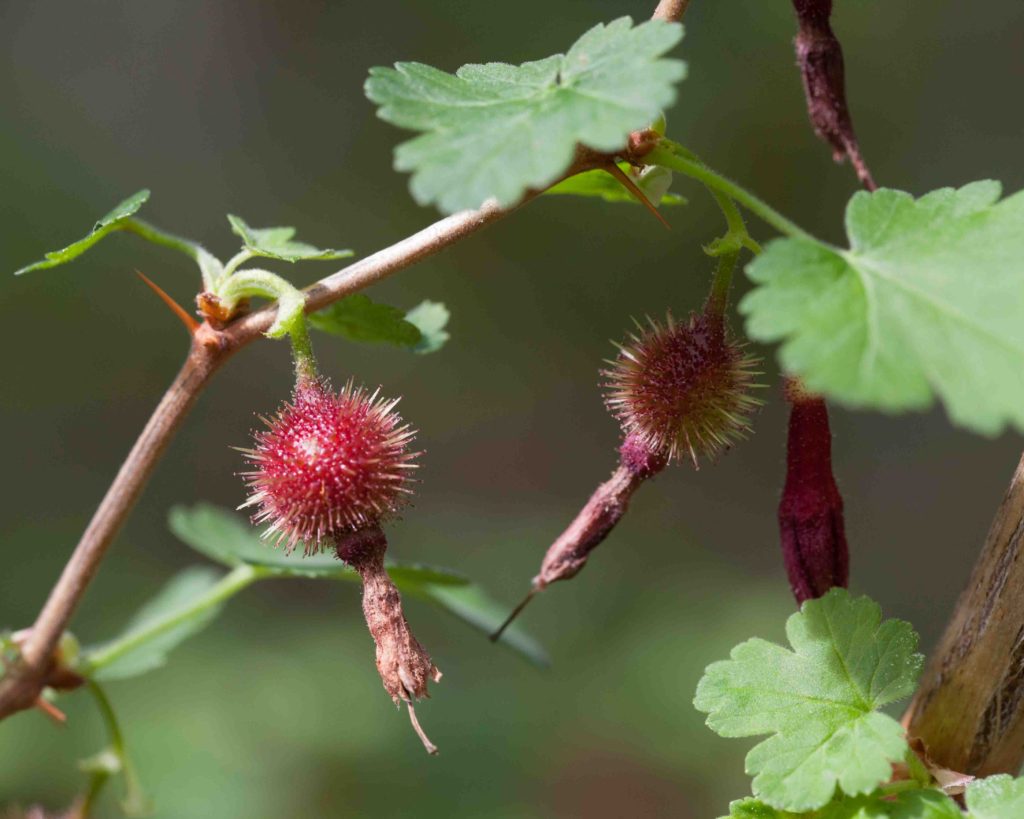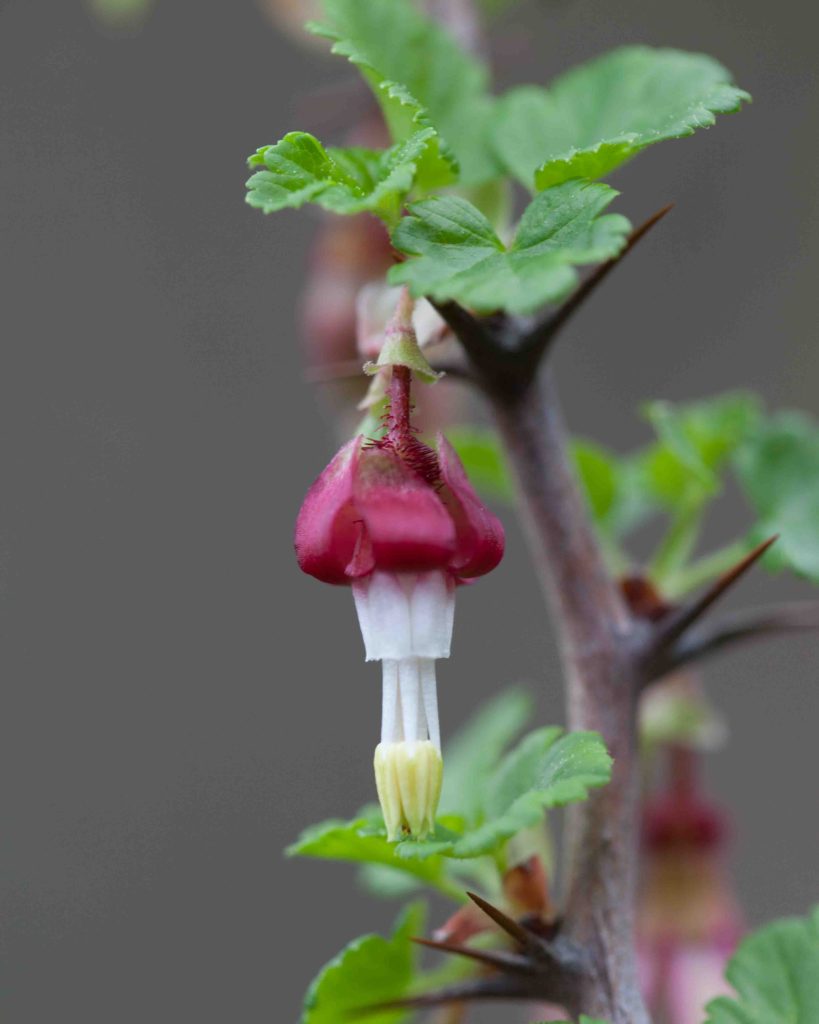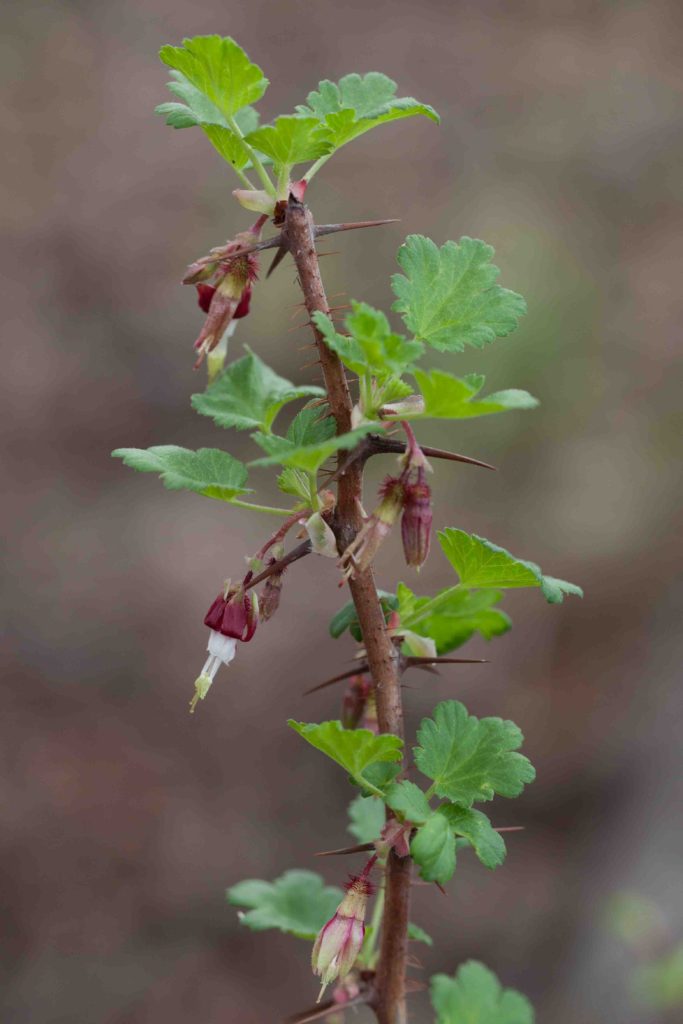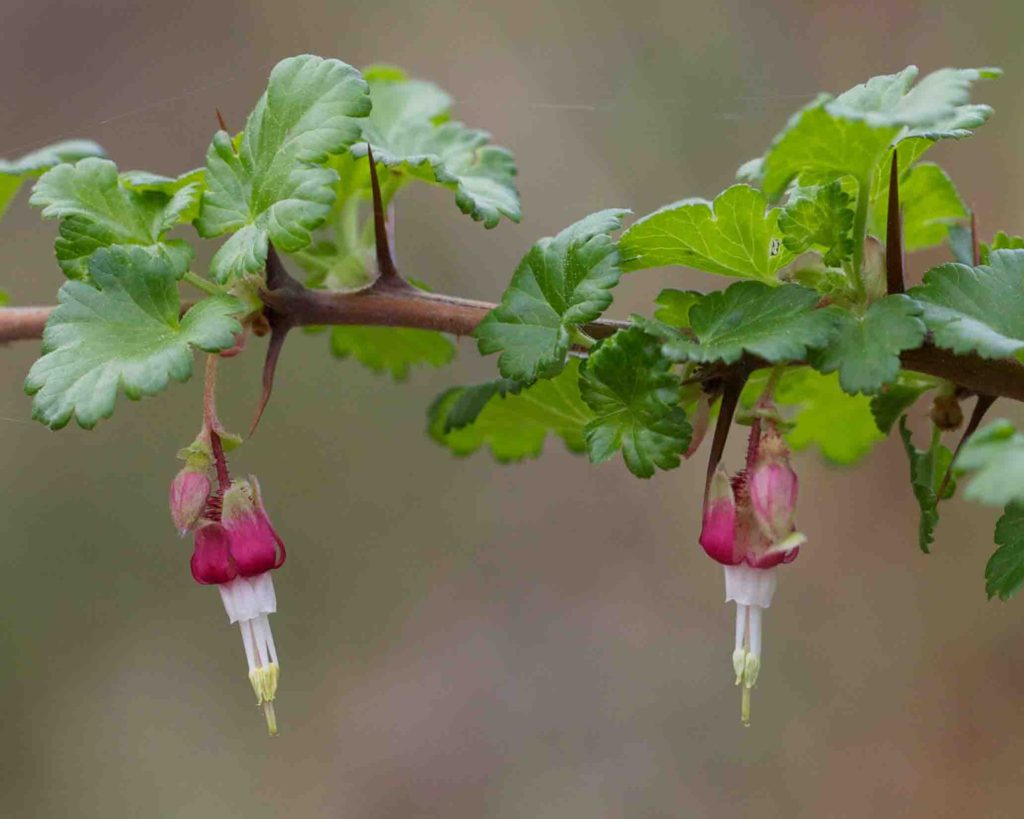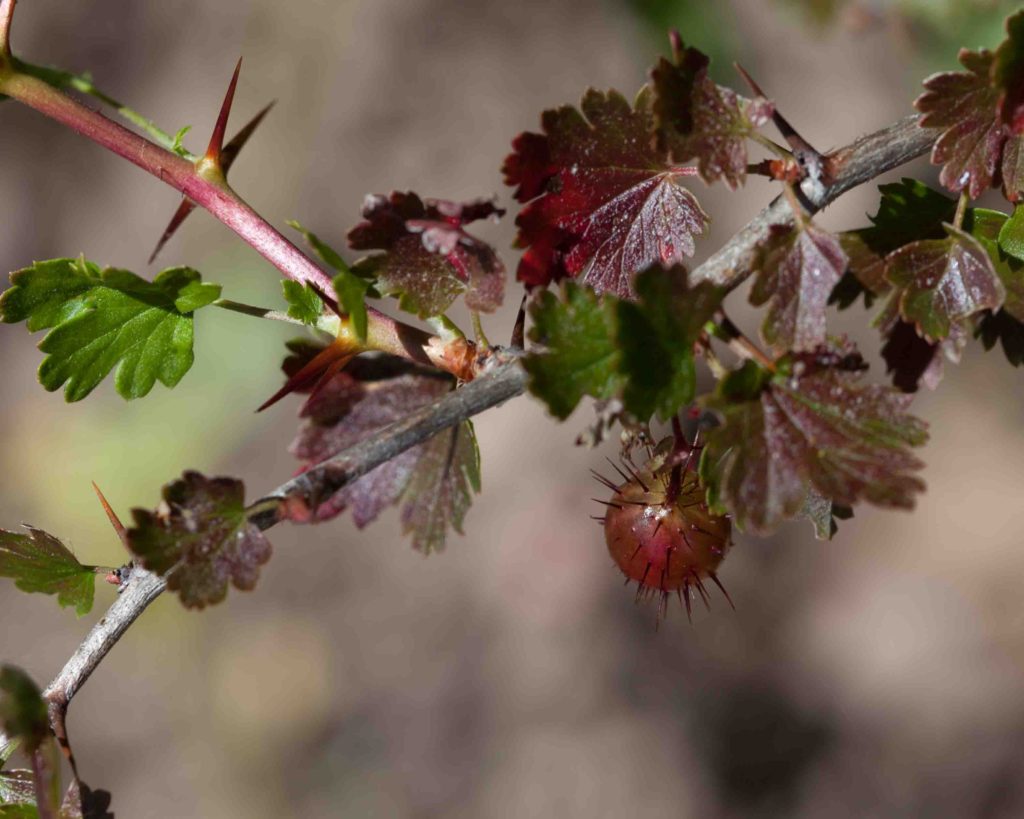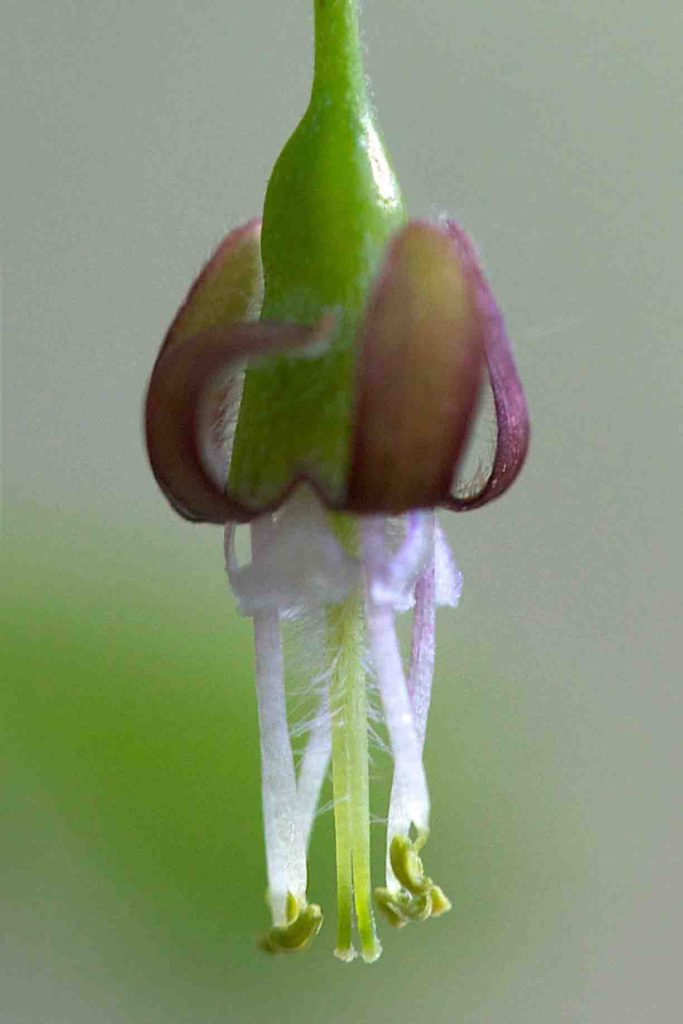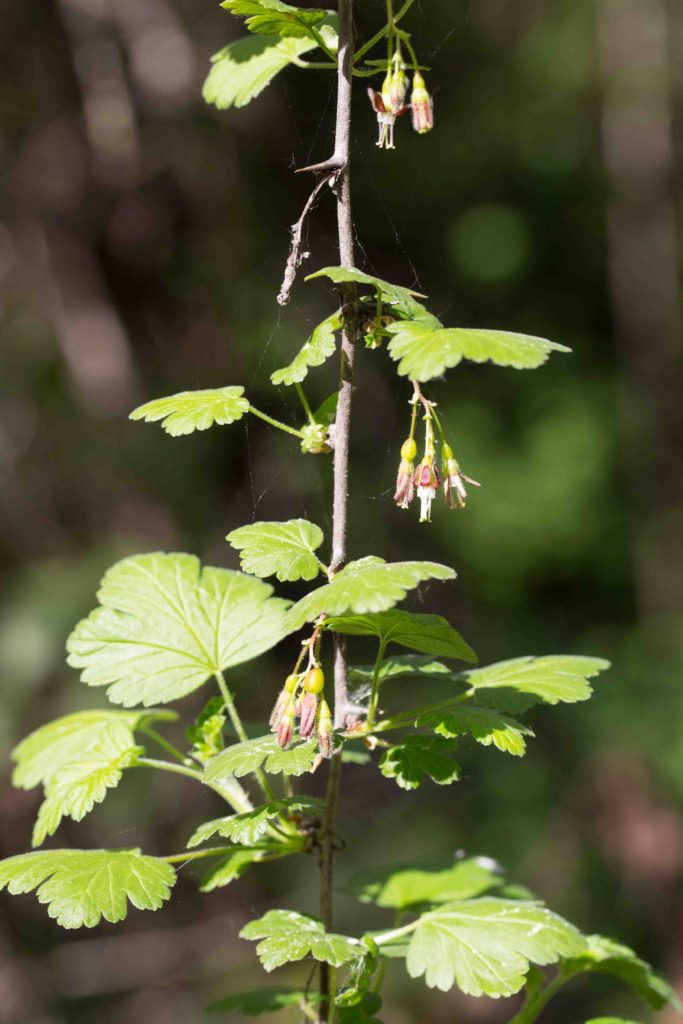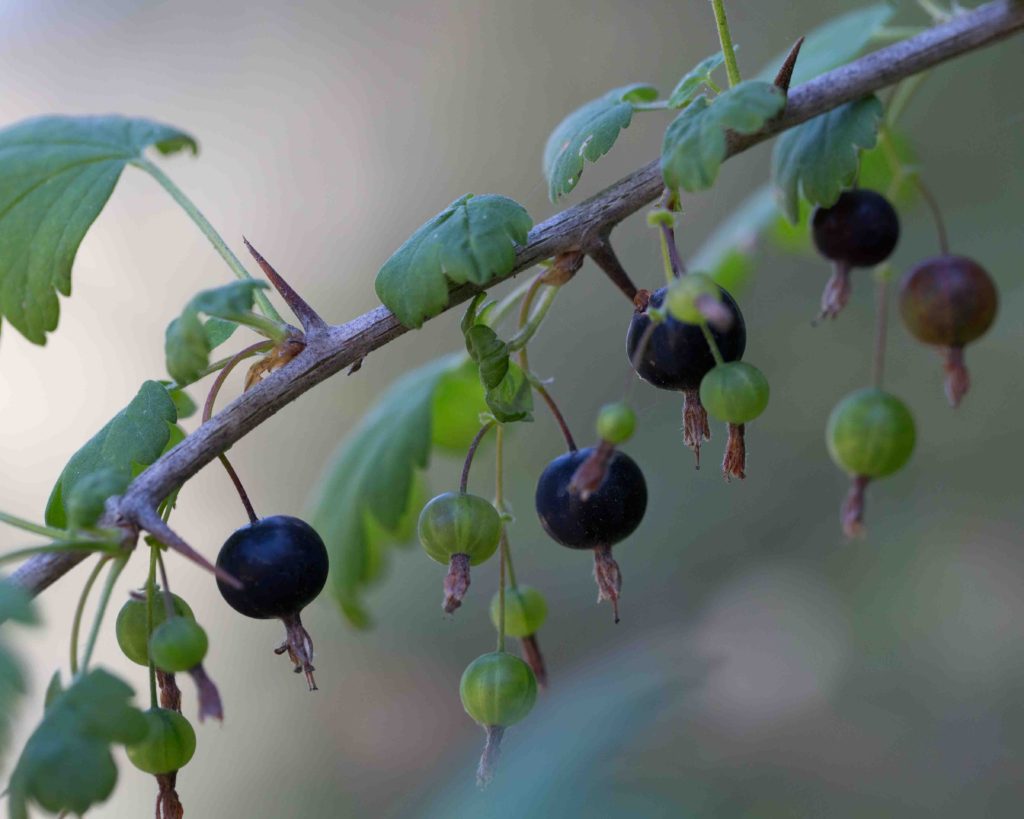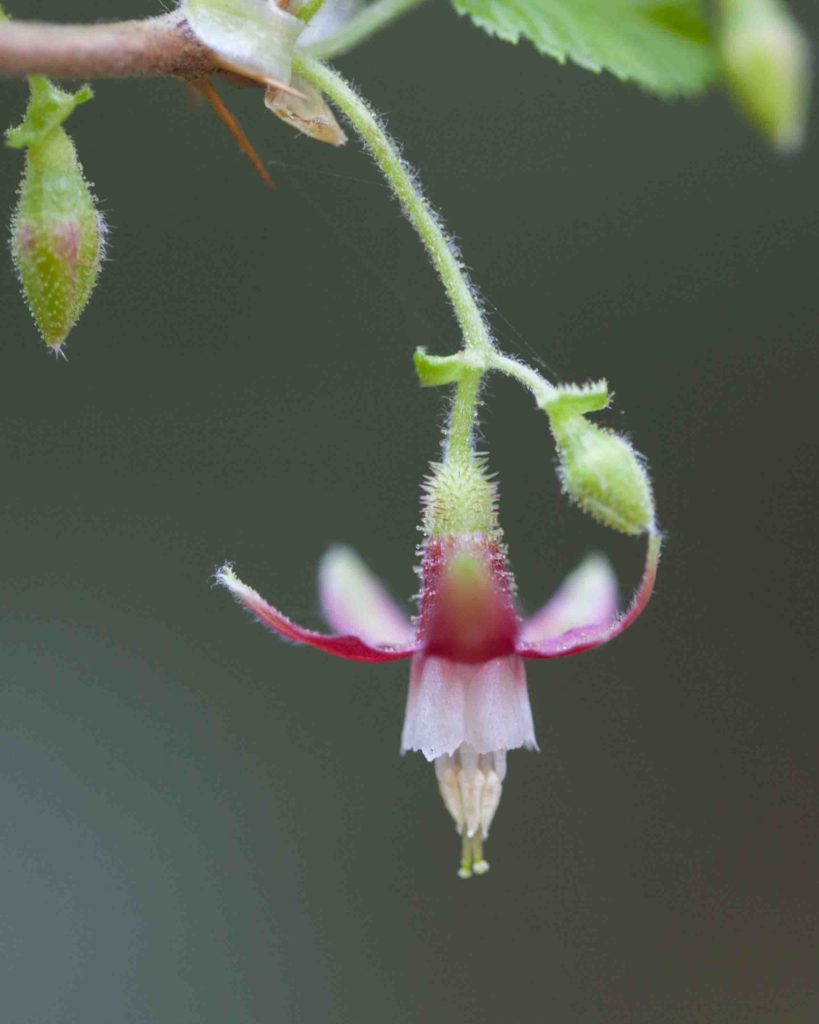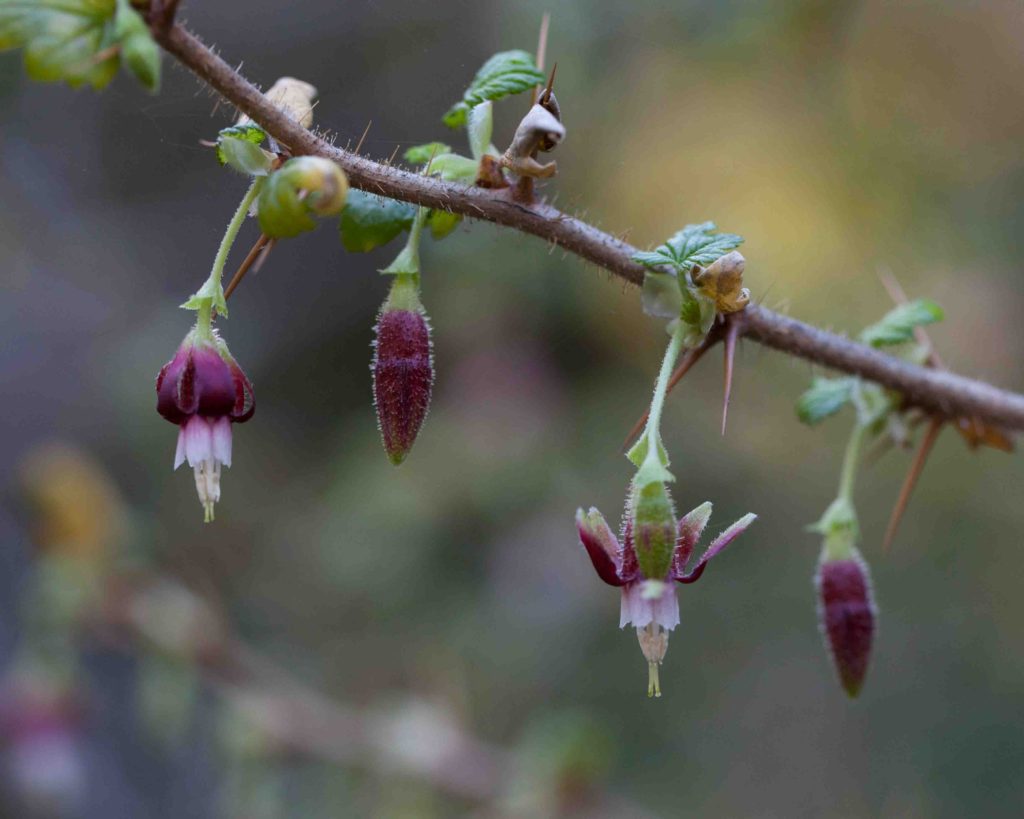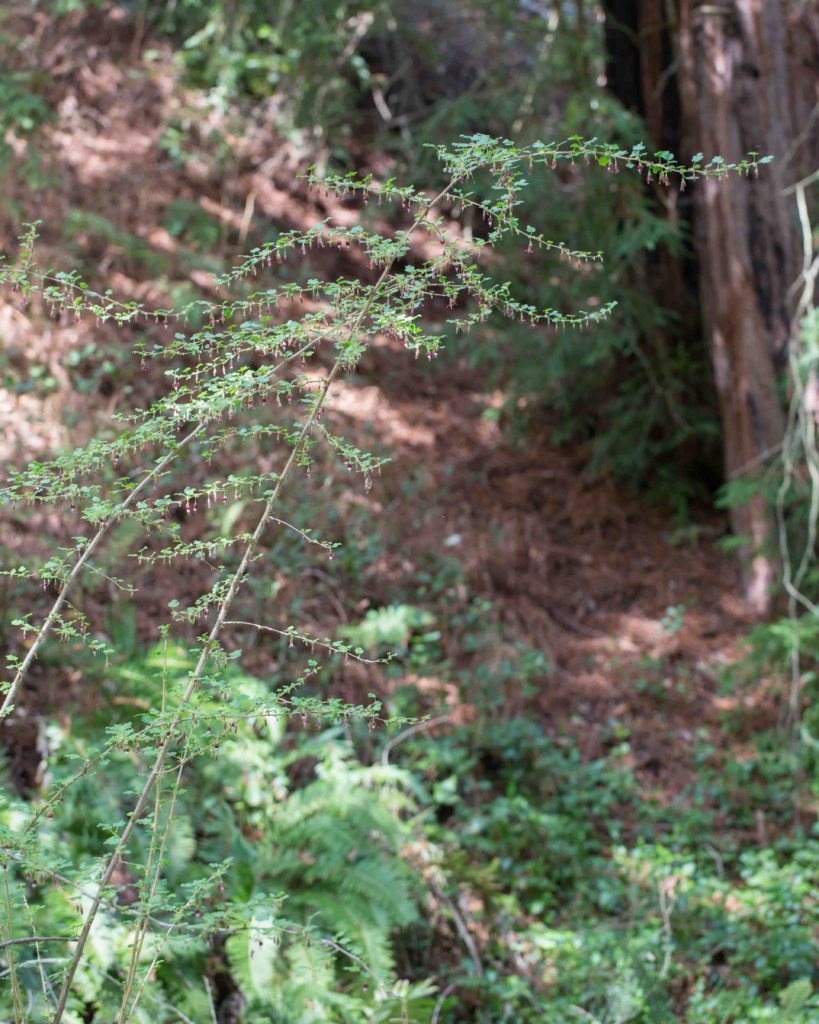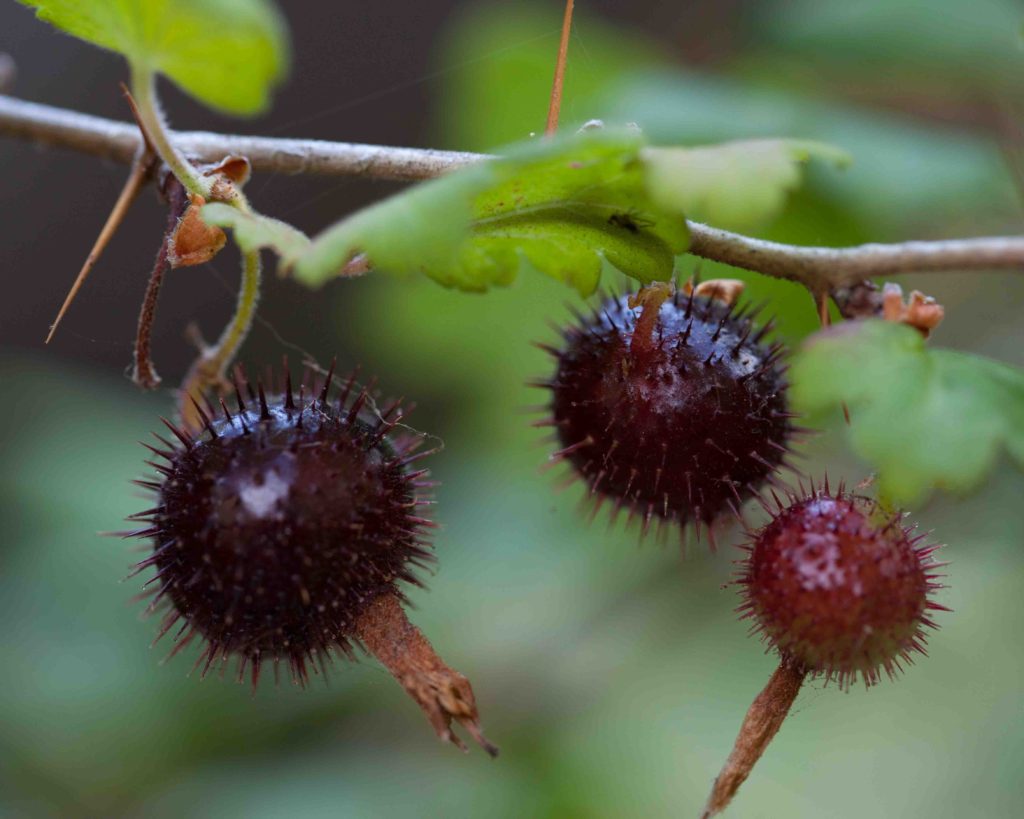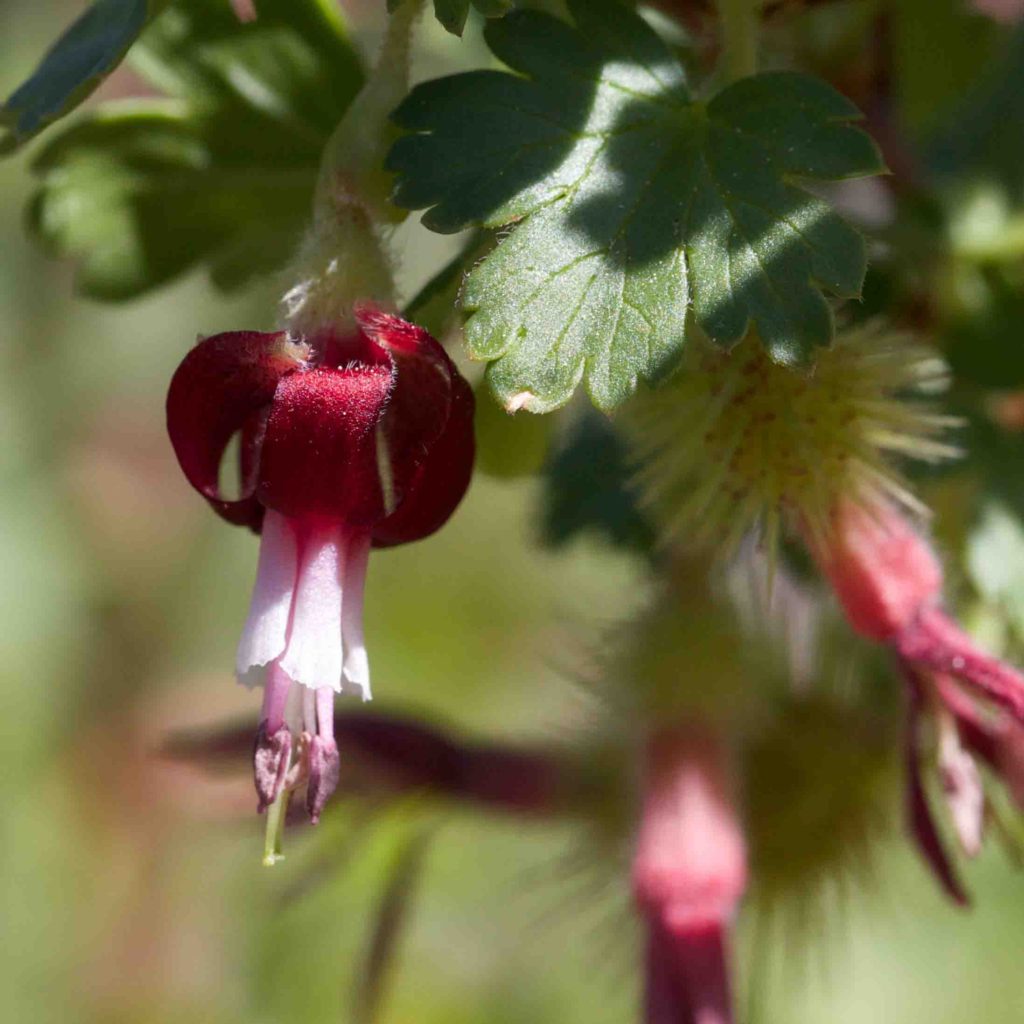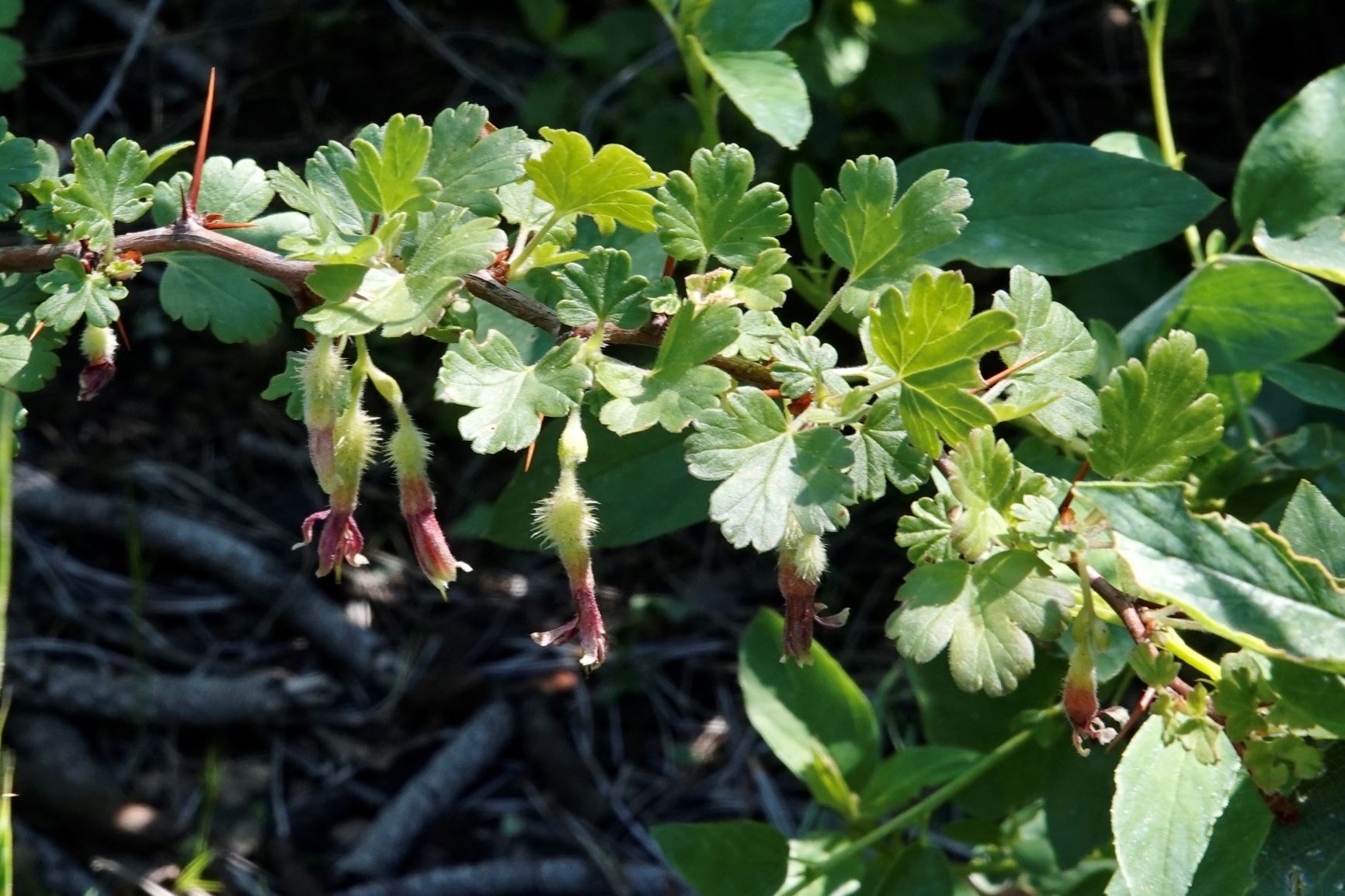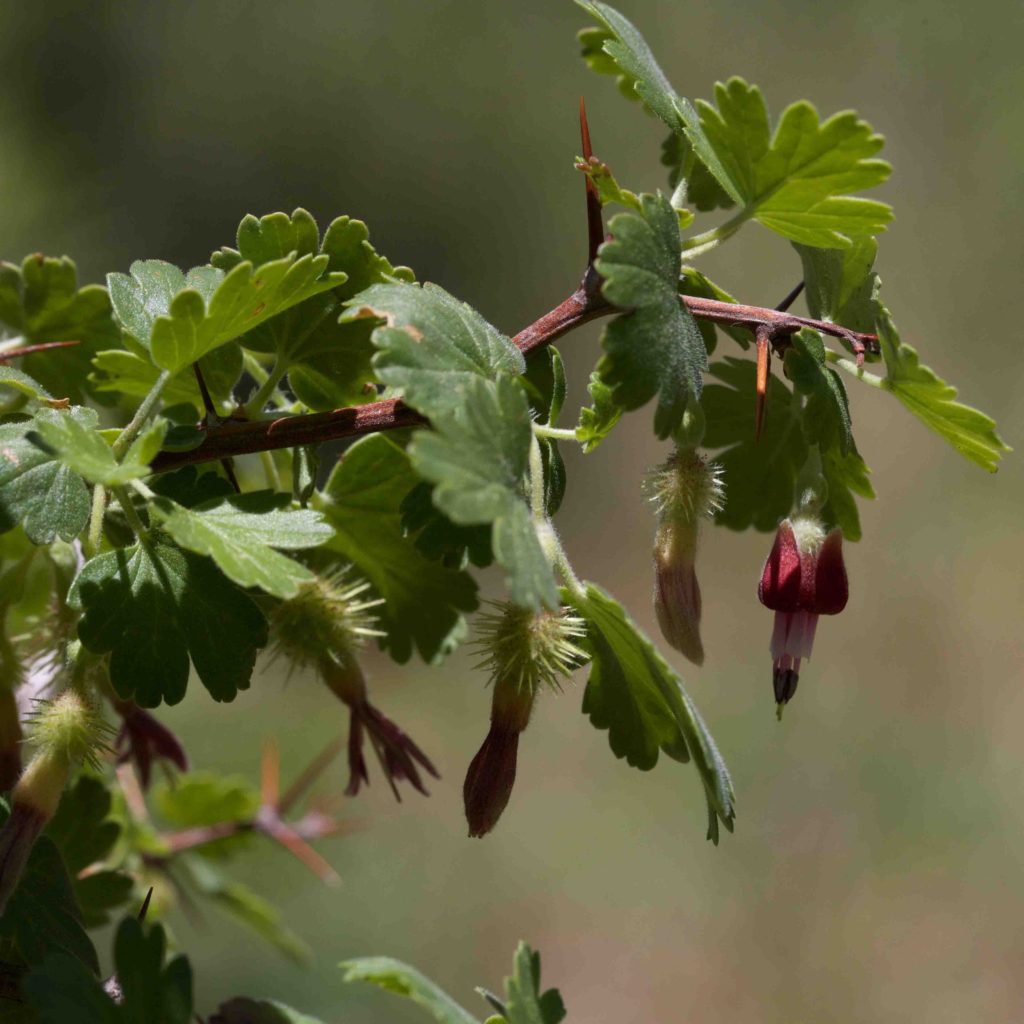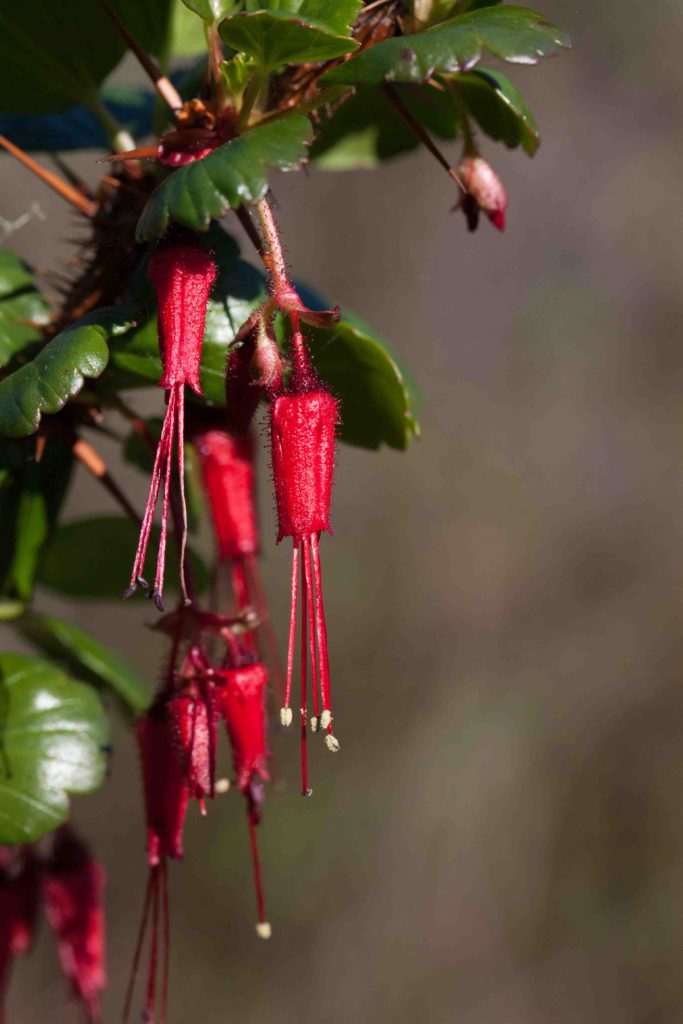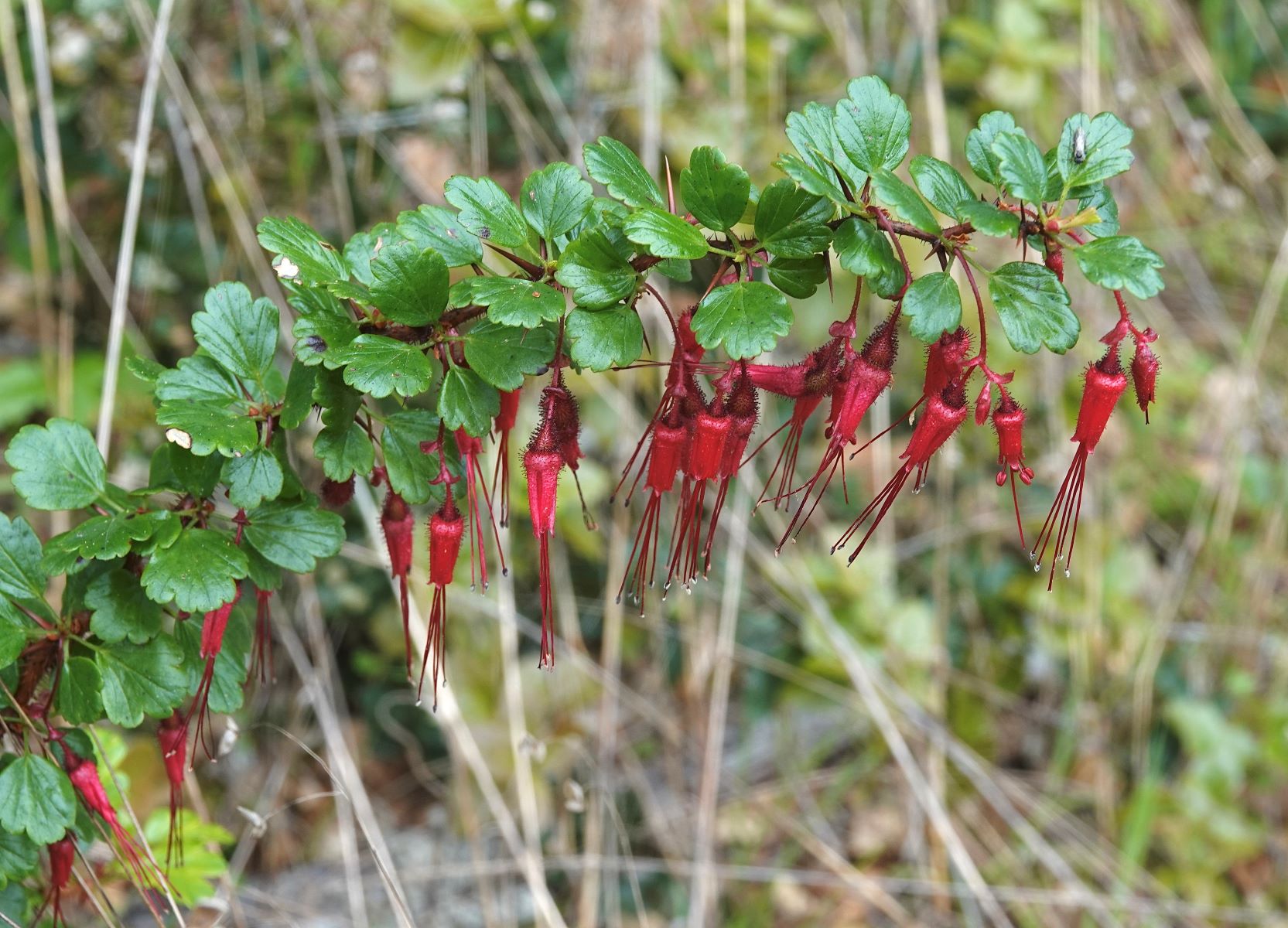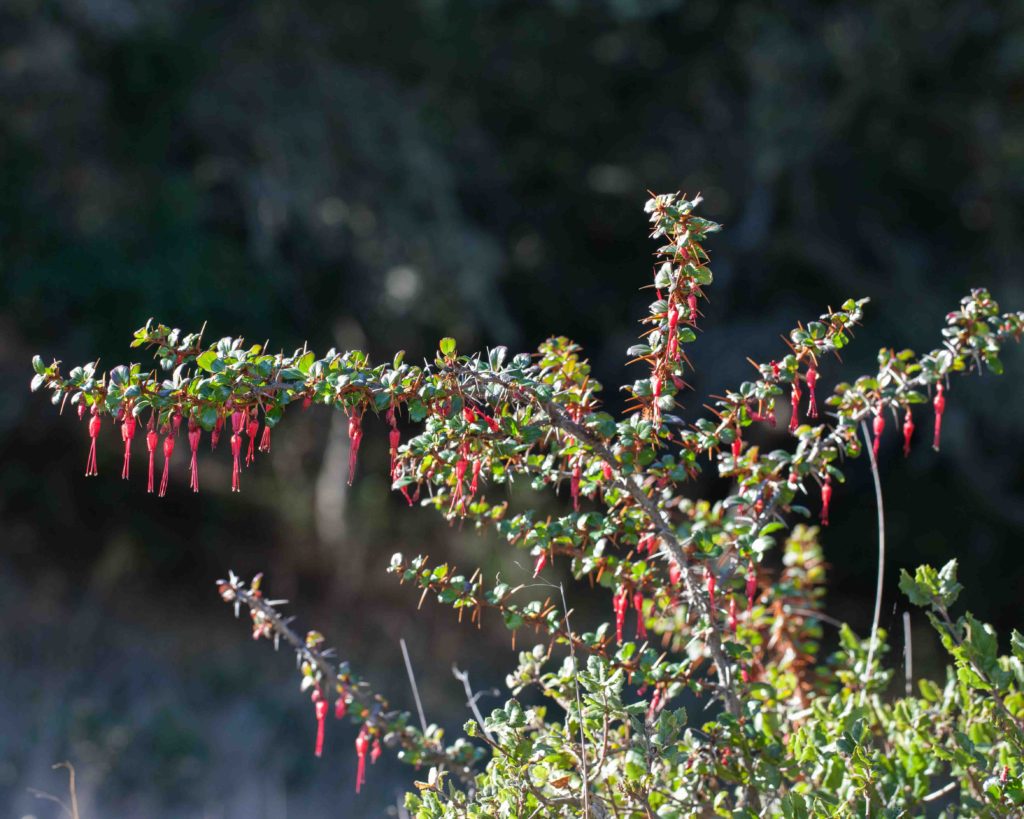Grossulariaceae: Gooseberry Family — Gooseberries
The Gooseberry family contains a single genus Ribes, which includes both currants and gooseberries. These two groups can be distinguished by whether or not the stems have prominent and extremely sharp nodal spines. Gooseberries have them, currants do not. In addition, stems of certain gooseberries can be extremely bristly between the nodes; an important but not always reliable diagnostic feature.
Gooseberries can be tricky plants to identify. The books include detailed descriptions of particular differentiating features, but experience in the field suggests that not all plants show the features they are supposed to. The most reliable distinguishing characteristics are 1) the length of the petals relative to the stamens, and 2) the color of the anthers. Other factors will often need to be considered. The fruits are edible, and generally tasty, but often prickly and so need to be eaten with care.
Notes: in these flowers, the sepals are bright and attractive, often red, while the petals are smaller and shorter. When reference is made to the relative length of stamens and petals, both are measured from their base, so a stamen 1.5 times the length of the petals will be exserted half the length of the petals.
Bitter Gooseberry – Ribes amarum
Blooms:
Feb–Apr
Plant Height:
< 2 m
Flower Size:
Small
Origin:
Native
Habitat:
Wooded canyons
Notes:
Stems of this shrub have 3 nodal spines, but lack internodal bristles. Flowers have maroon anthers. The petals are pink or white, and the sepals are pure maroon. Stamens are up to 1.5 times as long as the petals. Leaves are glandular below, 2–4 cm long with a petiole about the same length. Most or all of the bristles on the ovary are gland-tipped, which helps distinguish this species from Sierra Gooseberry (Ribes roezlii, see below).
Hillside Gooseberry – Ribes californicum var. californicum
Blooms:
Feb–Mar
Plant Height:
< 1.5 m
Flower Size:
Small
Origin:
Native
Habitat:
Forest openings & woodland
Notes:
Stems of this shrub have 3 nodal spines, but the young stems often lack internodal bristles. Petals are white, sepals reddish (sometimes green to greenish-white). Stamens are 2–4 times as long as the petals. Anthers are greenish-yellow. The style is well-exserted and glabrous, and the ovaries and berries are covered in short glandular hairs, unlike Straggly Gooseberry (Ribes divaricatum, see below). Leaves are small (1–2.5 cm long) with short (< 5 mm) petioles.
Straggly Gooseberry – Ribes divaricatum var. pubiflorum
Blooms:
Mar–May
Plant Height:
< 3.5 m
Flower Size:
Small
Origin:
Native
Habitat:
Coastal bluffs, woodland margins
Notes:
Stems of this shrub have 1–3 nodal spines, and may or may not have internodal bristles. Flowers are in clusters of 2–6. Petals and filaments are white, and sepals green to dark purple and reflexed. Stamens are twice as long as the petals, and anthers are cream-colored. The distinctive features of this gooseberry are the glabrous ovary and berry, and noticeable hairs at the base of the style. The growth pattern of the shrub amply justifies its common name.
Canyon Gooseberry – Ribes menziesii var. menziesii
Blooms:
Feb–Apr
Plant Height:
< 3 m
Flower Size:
Small
Origin:
Native
Habitat:
Coastal canyons
Notes:
This shrub is distinguished from Hillside Gooseberry (Ribes californicum, see above) by its dense internodal bristles, shorter stamens, and white to tan anthers. Petals are white to pinkish, and sepals red to deep purple. Stamens are barely longer than the petals; styles are well exserted. Leaves are 1.5–4 cm long, with 1–2.5 cm petioles and (unlike Hillside Gooseberry) are glandular on the lower surface. Some stems have only sparse internodal bristles, which can cause confusion.
Sierra Gooseberry – Ribes roezlii var. roezlii
Blooms:
May–June
Plant Height:
< 1.5 m
Flower Size:
Small
Origin:
Native
Habitat:
Generally above 1100 m
Notes:
As the name suggests, this is most commonly found in the Sierras, but a few examples are found in Monterey County (e.g. Chews Ridge). A smallish shrub, with dense leaves and flowers. Stems have no internodal bristles. Leaves are small (1–2.5 cm long), with petioles < 2 cm, and are not glandular. The petals are white to pink-tinged, the sepals maroon to dark red. Stamens are 1.5–2 times as long as the petals. Bracts are as long as or longer than the pedicels, often covering the ovary. Similar to Bitter Gooseberry (Ribes amarum, see above), but can be distinguished by the presence of non-glandular spines, as well as glandular bristles on the ovary. Photos #2 – 3 by CJH.
Fuchsia-flowered Gooseberry – Ribes speciosum
Blooms:
Jan–May
Plant Height:
< 2 m
Flower Size:
Medium
Origin:
Native
Habitat:
Coastal sage-scrub, chaparral
Notes:
By far the most commonly found gooseberry in the Monterey Peninsula. This is immediately recognizable by its bright red, fuchsia-like flowers with their long, exserted stamens and style. Internodal bristles are present in abundance. Ovaries and fruits are bristly. Photos #2-3 by CJH.
